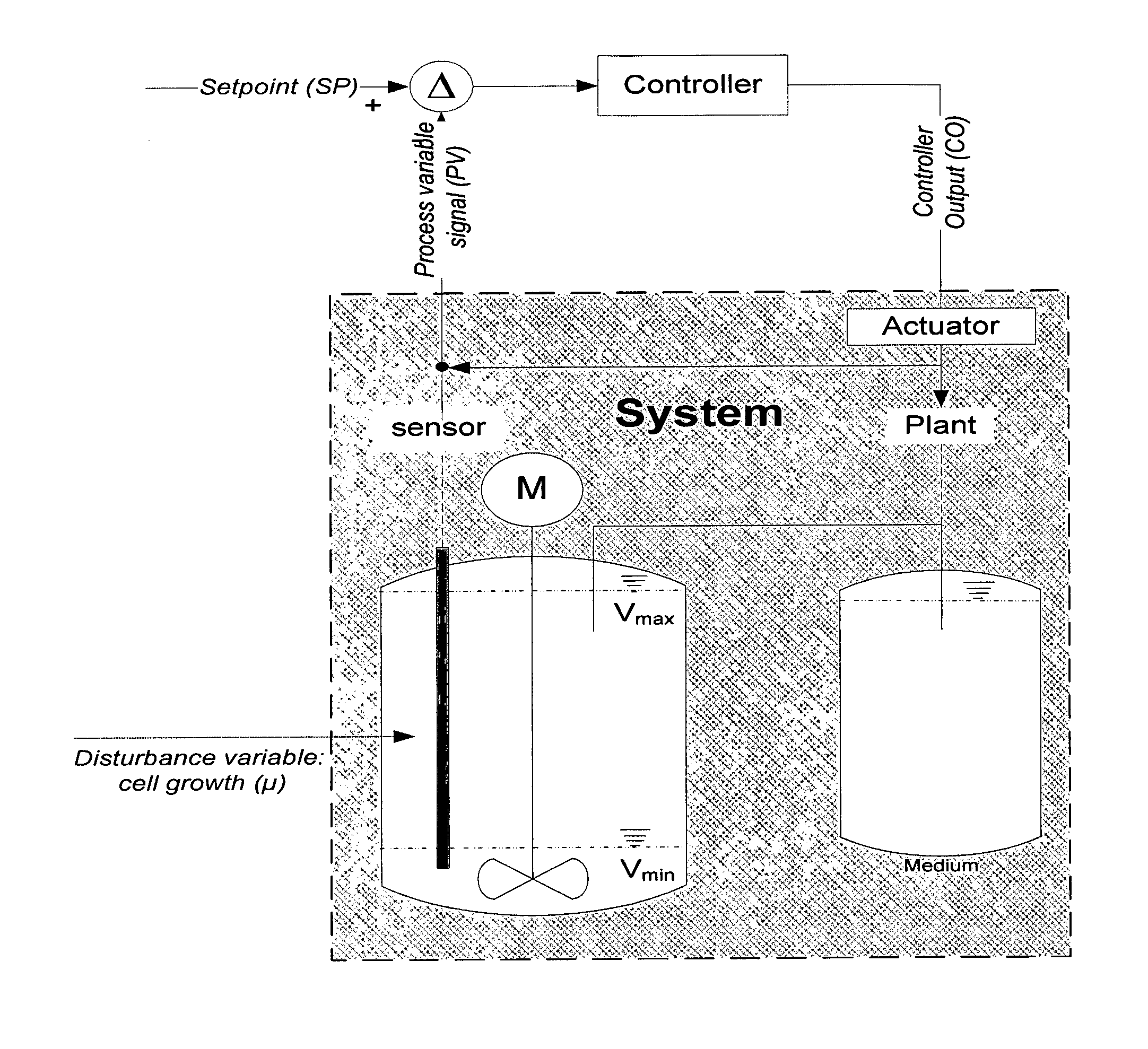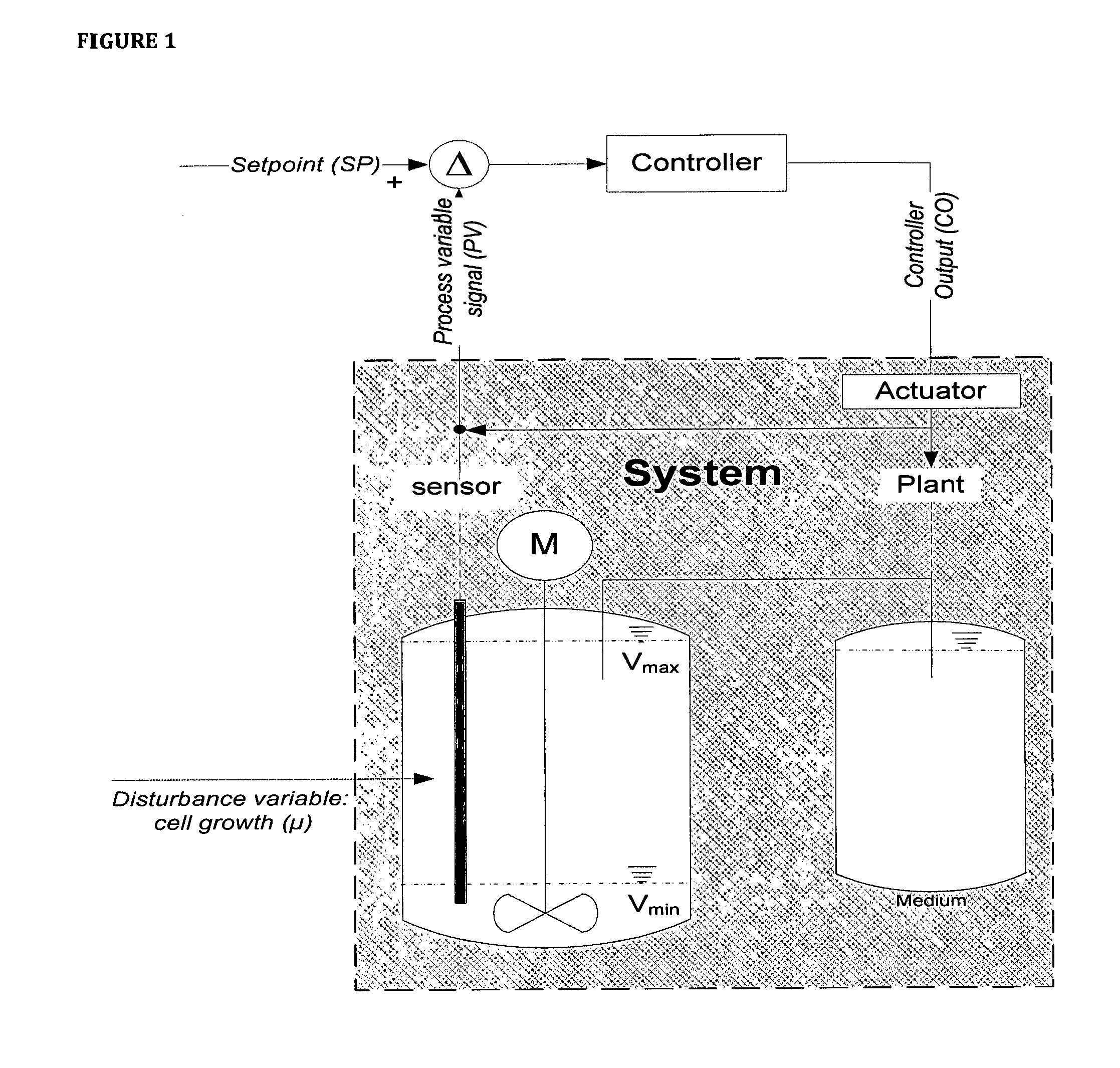Fermentation systems
a technology of fertilization system and spleen, which is applied in the direction of genital tract cells, artificial cell constructs, fused cells, etc., can solve the problems of substrate inhibition or growth suppression, increased volume demands and safety requirements, and many changes in the manufacture of biopharmaceuticals
- Summary
- Abstract
- Description
- Claims
- Application Information
AI Technical Summary
Benefits of technology
Problems solved by technology
Method used
Image
Examples
Embodiment Construction
[0076]The present disclosure relates to novel processes and methods for producing eukaryotic cells (biomass) and / or eukaryotic cell-derived products like proteins in a highly consistent and reproducible manner. The processes of the present disclosure are cell-density regulated cell cultivation processes, wherein adjusting the volume of the cell culture in the cultivation vessel regulates the cell density in the cell culture. The processes and methods are suited for both plant and mammalian-based systems, in a highly consistent and reproducible manner, wherein the processes are robust and reproducible production better meets regulatory requirements. One advantage of the processes of the present disclosure is the ability for producing improved cells for screening and product development due to a better comparability, batch-to-batch consistency and lower variation. Furthermore, the ability to provide highly viable (exponentially growing) cells with the disclosed processes, gives the ad...
PUM
| Property | Measurement | Unit |
|---|---|---|
| concentration | aaaaa | aaaaa |
| temperature | aaaaa | aaaaa |
| time period | aaaaa | aaaaa |
Abstract
Description
Claims
Application Information
 Login to View More
Login to View More - R&D
- Intellectual Property
- Life Sciences
- Materials
- Tech Scout
- Unparalleled Data Quality
- Higher Quality Content
- 60% Fewer Hallucinations
Browse by: Latest US Patents, China's latest patents, Technical Efficacy Thesaurus, Application Domain, Technology Topic, Popular Technical Reports.
© 2025 PatSnap. All rights reserved.Legal|Privacy policy|Modern Slavery Act Transparency Statement|Sitemap|About US| Contact US: help@patsnap.com



